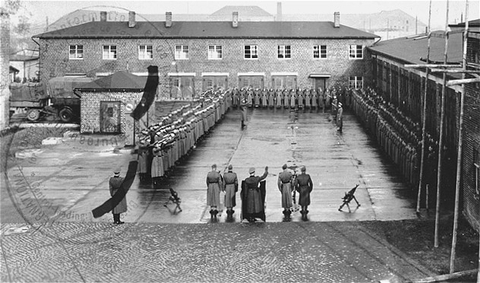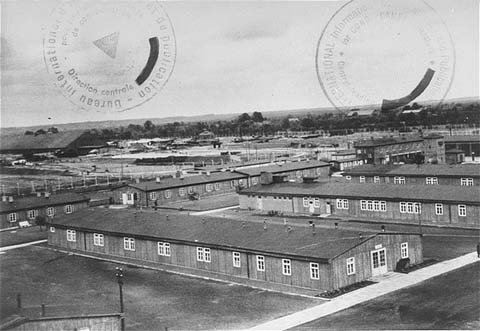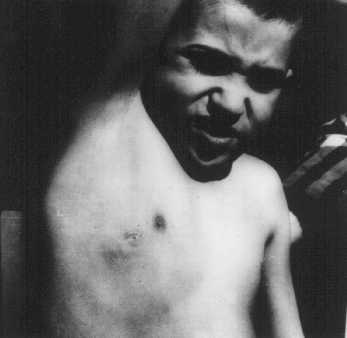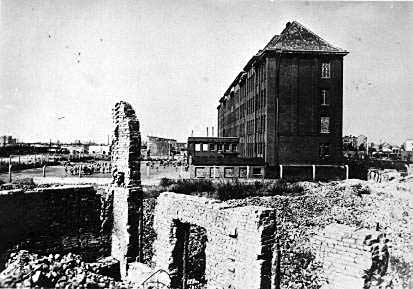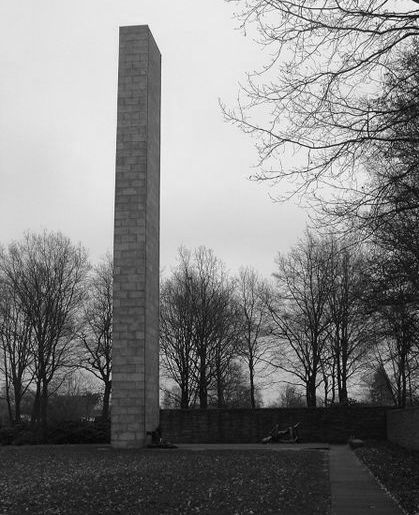Holocaust Education & Archive Research Team |
|
Other Camps
Key Nazi personalities in the Camp System The Labor & Extermination Camps
Auschwitz/Birkenau Jasenovac Klooga Majdanek Plaszow The Labor Camps
Trawniki
Concentration Camps
Transit Camps
|
||||||
Neuengamme Concentration Camp
Neuengamme concentration camp was situated in the outskirts of Hamburg, Germany.
Initially, Neuengamme was an annex of the Sachsenhausen concentration camp, the first group of prisoners arrived at Neuengamme on 13 December 1938, for the task of constructing the camp.
SS- Obersturmbannfuhrer Martin Weiss and SS- Obersturmbannfuhrer Max Pauly served as Commandants, Weiss served as Commandant from 1940 to 1942, and Pauly from 1942 until 1945.
Some of the more prominent SS Concentration Camp personnel who served at Neuengamme were:
Other noted SS that served at Neuengamme were; Hans Griem, , Hans Waldmann, Freidrich Walter, Dr Eduard Wirths, who was in charge of all physicians, dentists at Auschwitz, as well as Dachau and Bergen- Belsen.
The prisoners were housed in a disused brick factory, this factory’s very existence was the reason for the establishment of a concentration camp in Hamburg, which at the time had only temporary, small camps (Wittmoor and Fuhlsbuttel), the SS wanted to reactivate the brick factory and use its products primarily in the huge public structures that were being planned for the city.
In April 1940 the Deutsche- Erd- und Steinwerke GmbH (German Earth and Stone Works Ltd), an SS economic enterprise, signed an agreement with the city of Hamburg that provided for a substantial expansion of the brick factory, the digging of a canal to connect the factory with a tributary of the Elbe River, and a siding linking it to the railway network.
The work was to be done by prisoners, barracks were put up and more prisoners were brought in, the total reaching 1,000. As of 4 June 1940, Neuengamme became an independent concentration camp.
Beginning in the fall of 1941, thousands of Soviet Prisoners of War were brought there as well, Soviet nationals eventually became the largest national group in the camp, numbering 34,500, including 5,900 women.
In 1942, private firms such as the well-known Walther weapons factory established branches at Neuengamme. Numerous annexes to the camp were set up at various centres of the armaments industry, especially the Bremen and Hamburg shipbuilding and machine works. They were also established in Hannover and in the industrial area of Brunswick, which adjoined the Volkswagen Company (the present site at Wolfsburg) and the Hermann Goring Works.
Neuengamme became a centre for scientific medical research, the most important medical research carried out at Neuengamme focused on tuberculosis experiments. They paralleled a tragic accident in the city of Lubeck three years before Hitler seized power.
In the laboratory of the municipal hospital three researchers sifted the BCG vaccine for use with infants in the children’s clinic. After the vaccine was administered orally three times to 251 infants, it was discovered that it was contaminated with the virulent Koch bacillus.
Seventy-three of the babies died. That accident almost halted the use of the BCG vaccine for several years, even though it was the most effective method known at the time for the prevention of tuberculosis.
Fourteen years later at Neuengamme Nazi physicians repeated the Lubeck tragedy by experimenting with little children. In 1944 the SS brought a transport from Auschwitz to Neuengamme containing twenty –five children between six and twelve years of age. A Dr Heissmeyer in Berlin had previously selected those children for experiments for “the benefits of progress in medicine.”
The doctors placed the children in an isolated block under the care of prisoner professors and Dutch orderlies, all the children showed some evidence of tuberculosis.
The researchers started the experiment three weeks after the arrival of the children. The project’s originator, Dr Heissmeyer, came from Berlin every ten days to work with the children. He made incisions in the skin and rubbed cultures of tubercular bacilli into the skin of the left or right arm.
After a few days, redness and swelling appeared on the arm and the auxiliary glands enlarged, the child’s temperature rose sharply for a few days and then returned normal in a week.
The process was repeated several times. After administering a local anaesthetic such as novacaine, a doctor made a long incision under the armpit to remove the lymphatic nodes of each child, an operation lasting about fifteen minutes.
He then plugged and dressed the wound and sent the sterile test tubes, numbered and named to Berlin. There, technicians bred new cultures of tubercular bacilli, made an emulsion and sent the mixture back to the camp.
Every two weeks each child was given an injection of the vaccine from his own lymphatic node. After four or five months the majority of the children ran high temperatures. In the third month enlarged lymph nodes appeared in eighty percent of the children. The doctors noted serious lung changes by the fourth month. By the sixth month cavities had formed in the lungs of almost every child.
While secretly giving sweets and toys to the children, adult prisoners had an opportunity to observe the experiment. Dr Kowalski, one of those prisoners, provides us with descriptions of the disposition of the tubercular children.
In April 1945 when the Allies were nearly at the gates of Neuengamme, Dr Heissmeyer proposed that the children be transferred to a sub-camp of Neuengamme, called Bullenhuser Damm.
He wanted all traces of the experiment eliminated including the children. General Pohl gave the order and the doctors moved the children to Bullenhuser Damm, where they were taken into the basement.
After administering morphine, the doctors put ropes around the children’s necks and hanged them, as one prisoner observed, “like pictures hung up a wall on hooks.”
By 1945 the total number of annexes to Neuengamme reached seventy. Most of the new prisoners were put into these satellites. In 1944 the main camp had a prisoner population of 12,000, about twice that number were in the satellites.
Beginning in the summer of 1944, large transports of Jewish prisoners were brought in, mainly from Hungary and Poland. Some thirteen thousand Jewish prisoners passed through the main camp and its annexes, among them three thousand women, in 1944 and 1945.
It is estimated that the total number of prisoners sent to Neuengamme was one hundred and six thousand. The mortality rate was high, compared to that of other concentration camps, situated in the Reich, especially in the early years when the brick factory was being reactivated.
It is assumed that fifty-five thousand prisoners perished in Neuengamme and its annexes. The main camp was closed on 29 April 1945, following the evacuation of the annexes.
Sources:
Encyclopedia of the Holocaust - Israel Gutman (Ed) - New York 1990 Hitler's Death Camps by Konnilyn Feig, published by Holmes and Meier, New York and London 1979. The Holocaust by Sir Martin Gilbert, published by Colins, London 1986 The Camp Men by French L MacLean, published by Schiffer Military History Atglen PA 1999 National Archives Kew – Photo Album USHMM
Copyright Harald Neilsen & Chris Webb H.E.A.R.T 2007
|
